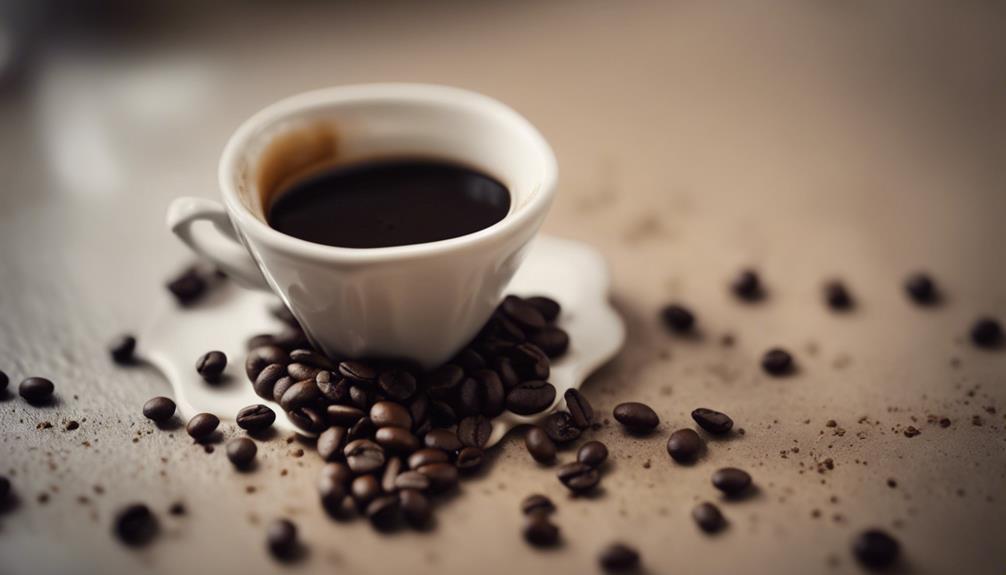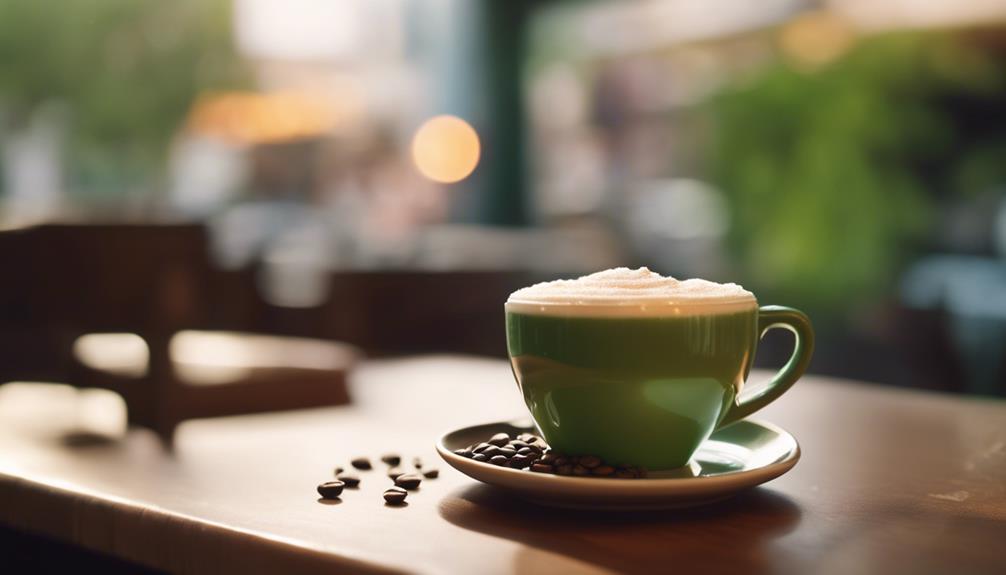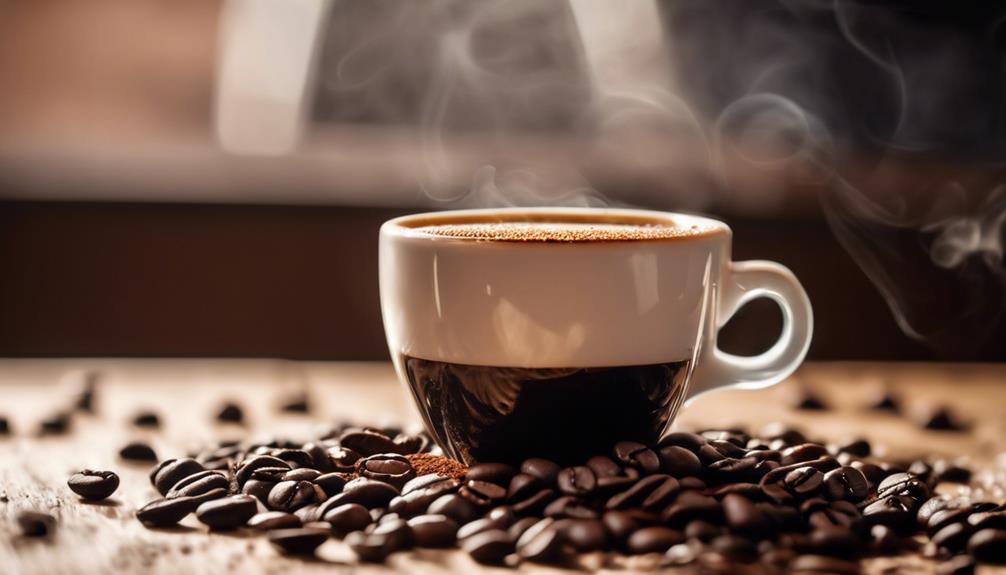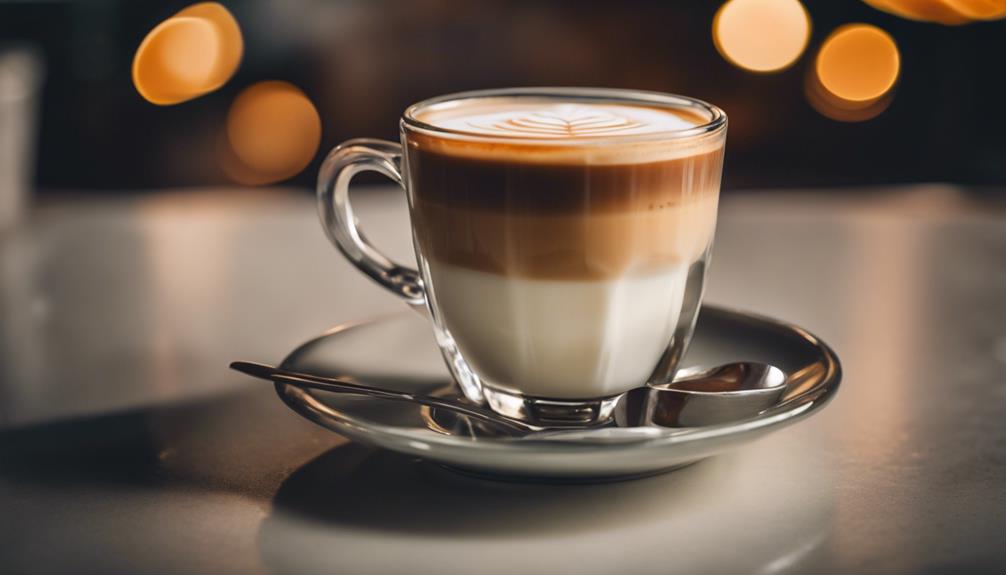If your espresso tastes bitter, the grind size, extraction time, water temperature, roast level of beans, and bean quality could be the culprits. Adjust the grind size to control extraction and reduce bitterness. Maintain water temperature between 195-205°F. Consider the roast level – dark beans are more bitter. Opt for fresh, high-quality beans to enhance flavor. Guarantee proper tamping pressure and consistent pressure. Dirty equipment can lead to a metallic taste, so clean regularly. Making these adjustments could help balance the flavor of your espresso. More insights on brewing parameters and bean quality await.
Key Takeaways
- Adjust grind size to control extraction and reduce bitterness.
- Choose fresh, quality beans with the right roast level.
- Maintain water temperature between 195-205°F for optimal extraction.
- Avoid over-extraction by monitoring brewing time and tamping pressure.
- Regularly clean equipment to prevent oils and residue causing bitterness.
Grind Size and Extraction Time
Adjusting the grind size of your coffee beans significantly impacts the rate of extraction, potentially leading to bitterness in your espresso. Finer grinds result in quicker extraction, which can lead to over-extraction if not carefully monitored. This over-extraction can introduce a bitter taste to your espresso, affecting its overall flavor profile.
To avoid bitterness, it's important to balance the extraction time with the grind size. Longer extraction times with fine grinds can easily tip the scale towards bitterness, while shorter extraction times with coarse grinds may result in under-extraction and a lack of flavor. Achieving a balanced flavor profile in your espresso requires consistent extraction times that complement the chosen grind size.
Water Temperature and Pressure
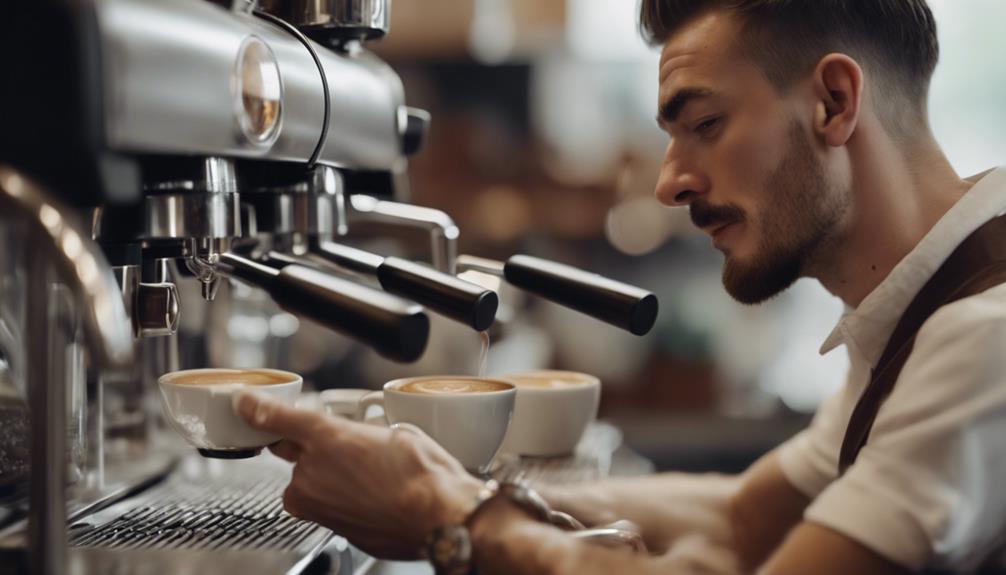
Water temperature and pressure play essential roles in determining the taste of your espresso. The ideal water temperature range for extraction falls between 195-205°F to bring out the flavors without bitterness.
Additionally, maintaining a high pressure of 9 bars during extraction aids in extracting the desired flavors smoothly.
Ideal Water Temperature
To achieve the best extraction and avoid bitterness in your espresso, maintaining the water temperature between 195°F to 205°F is essential. The key water temperature plays a vital role in brewing espresso as it directly impacts the flavors extracted from the coffee grounds.
Water that's too hot can lead to over-extraction, resulting in a bitter taste in your espresso. Consistency in water temperature is pivotal to preventing bitterness and achieving a well-balanced brew.
Monitoring and adjusting the water temperature within the ideal range can greatly enhance the taste of your espresso, bringing out the desired flavors without the unpleasant bitterness. By paying attention to the water temperature during the brewing process, you can control the extraction and ensure a satisfying espresso experience.
Impact of Pressure
Maintaining consistent pressure during the extraction process is essential for achieving a well-balanced and flavorful espresso shot. High pressure can lead to over-extraction, resulting in bitter coffee. This occurs when the water is forced through the coffee grounds too quickly, extracting undesirable compounds that contribute to the bitterness in your espresso.
In contrast, uneven extraction caused by inconsistent pressure can also lead to a bitter taste in your coffee. By implementing pressure profiling techniques, you can control the extraction process more effectively, ensuring a balanced and less bitter espresso taste.
Monitoring pressure throughout the extraction is important in preventing over-extraction and achieving a well-extracted shot. Remember, maintaining the right pressure, alongside ideal water temperature, plays a significant role in the overall flavor profile of your espresso.
Be mindful of pressure variations to enjoy a delicious and well-rounded espresso experience.
Roast Level of Coffee Beans
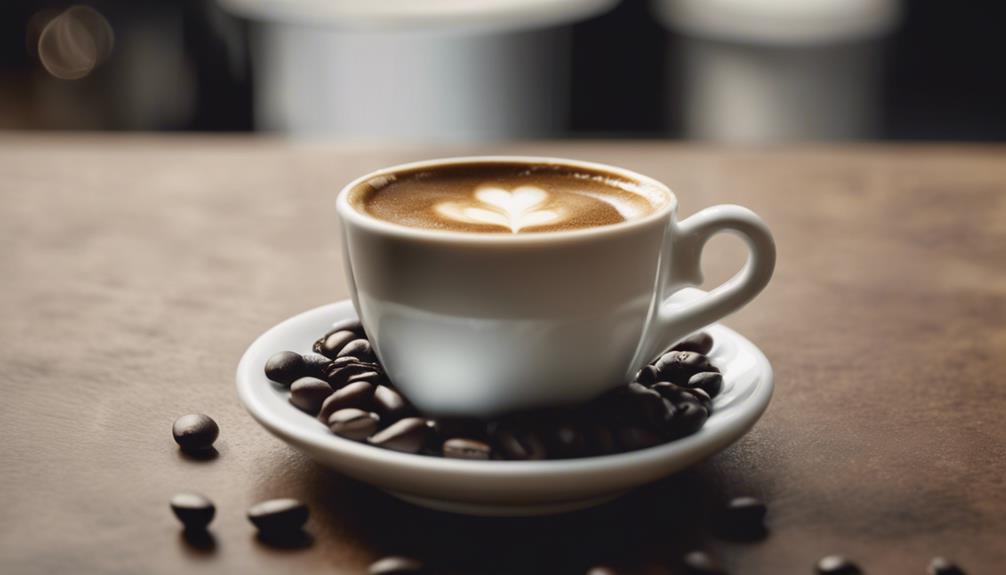
Selecting the appropriate roast level of coffee beans is vital in determining the bitterness of your espresso. The roast level – whether dark, medium, or light – plays an essential role in shaping the flavor profile of your espresso shot.
Dark roast beans are known for their intense bitterness, achieved through prolonged roasting that brings out smoky and charred notes. On the other hand, light roast beans retain more of their natural flavors and acidity, resulting in a less bitter taste experience.
If you prefer a balanced approach, medium roast beans offer a middle ground, blending the richness of dark roasts with the brightness of light roasts to create a nuanced flavor profile with moderate bitterness.
Understanding the impact of roast levels on espresso taste can help you achieve the desired balance of flavors and bitterness in your daily cup of coffee.
Quality and Freshness of Beans

Ensuring the quality and freshness of your coffee beans is essential for achieving a smooth and balanced espresso flavor profile. Quality beans sourced and roasted with care contribute greatly to the overall taste of your espresso.
Opting for specialty Arabica beans over Robusta can help reduce bitterness, as Arabica beans tend to have a milder flavor profile. It's important to pay attention to the roast level of your beans, as over-roasted beans can introduce a burnt taste to your espresso, leading to bitterness.
Freshness is key to avoiding a stale or harsh flavor in your coffee; stale beans can develop an unpleasant taste during extraction. The origin and processing method of your coffee beans also play an important role in determining the bitterness and intensity of flavor in your espresso.
Importance of Proper Brewing Parameters
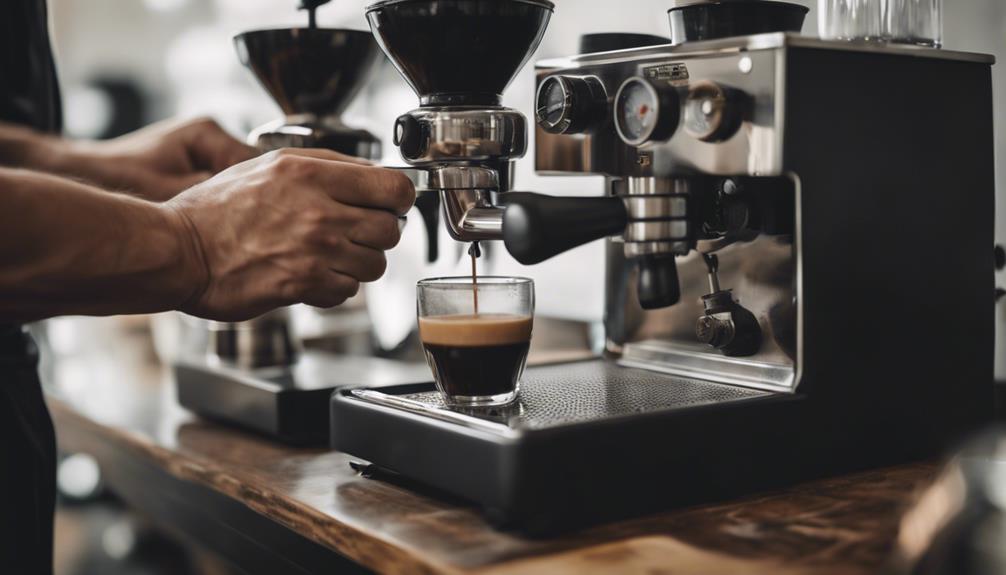
To achieve a balanced, flavorful espresso, pay close attention to brewing parameters. The time you brew, the temperature of the water, and the size of your grind all impact the taste of your espresso.
Ensuring these factors are in harmony will help you avoid the bitterness that can result from improper brewing techniques.
Brewing Time Impact
For peak flavor extraction and to prevent bitterness in your espresso, the brewing time must be carefully controlled within the range of 20-30 seconds. Here's why it's essential:
- Over-Extraction Risks: Brewing your espresso for too long can lead to over-extraction, where too many compounds are drawn out, resulting in a bitter taste that overwhelms the nuanced flavors of the coffee.
- Under-Extraction Pitfalls: On the flip side, brewing too quickly can cause under-extraction. This means not enough desirable flavors have been extracted, leaving behind a bitter taste due to the incomplete brewing process.
- Control with Grind Size and Tamping: Adjusting your grind size and tamping pressure can help regulate the brewing time, ensuring that you hit the sweet spot for flavor extraction without veering into bitterness.
Water Temperature Influence
Achieving the ideal water temperature is essential in influencing the taste and flavor of your espresso shot, directly impacting whether it turns out bitter or balanced. Water temperature greatly affects the extraction process of espresso, playing a vital role in the overall flavor profile.
To prevent bitterness, it's important to adhere to proper brewing parameters, with the recommended water temperature falling between 195°F to 205°F. Inconsistent water temperature can lead to under-extraction or over-extraction, resulting in a bitter taste in your espresso.
Maintaining precise control over the water temperature is paramount for producing well-balanced and non-bitter espresso shots. By ensuring the water temperature is within the ideal range, you can enhance the extraction process, ultimately influencing the taste of your espresso to be more enjoyable and flavorful.
Paying attention to this critical brewing parameter can make a significant difference in the quality of your espresso.
Grind Size Importance
Maintaining the right grind size is essential for ensuring the best extraction and flavor of your espresso. Here's why it's important:
- Influence on Extraction:
The grind size of your coffee beans directly affects the extraction process by determining the surface area exposed to water. This impacts the flavor profile of your espresso.
- Risk of Over-Extraction:
Using a grind size that's too fine can lead to over-extraction, extracting excessive solubles and resulting in a bitter taste in your espresso. It's important to find the right balance to avoid this bitterness.
- Achieving Balanced Flavor:
Consistency and uniformity in grind size play a significant role in achieving a balanced flavor in your espresso shots. Adjusting the grind size based on the type of beans and your desired flavor profile is key to enjoying a non-bitter, well-extracted espresso.
Impact of Over-Extraction
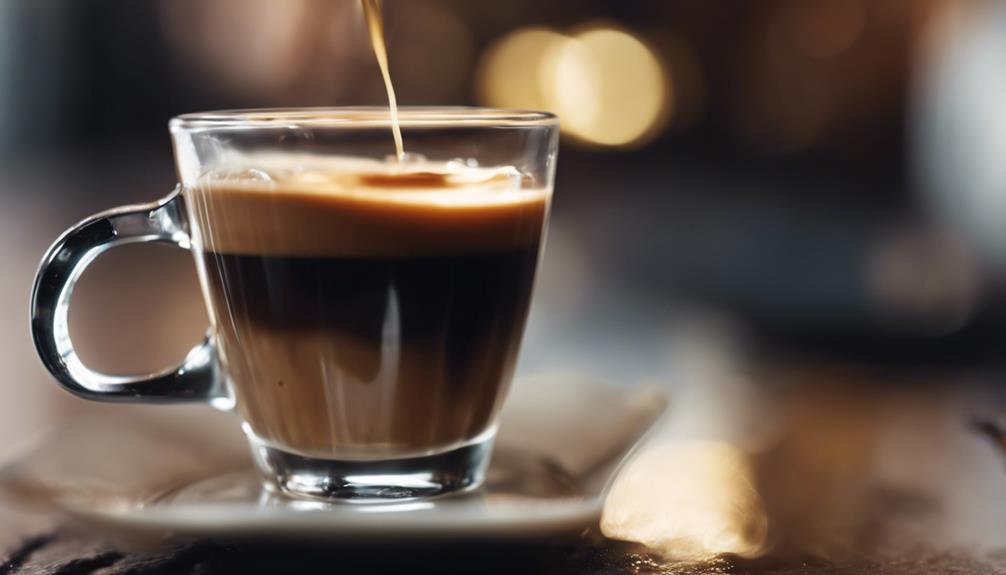
To prevent bitterness in your espresso, be mindful of the impact of over-extraction when water bonds excessively with the coffee grounds during the brewing process. Over-extraction occurs when the fine grounds are tightly tamped, causing the water to extract too much from the coffee, resulting in a bitter taste.
Proper tamping pressure, typically around 30lbs, plays an essential role in preventing over-extraction and maintaining a balanced flavor profile in your espresso.
Additionally, factors such as scorching the coffee or subjecting it to prolonged heat can exacerbate over-extraction, leading to increased bitterness in your brew.
By being attentive to these elements during the brewing process, you can avoid the unpleasant bitterness associated with over-extraction.
Role of Brew Ratios in Bitterness

The brew ratio greatly influences the bitterness of your espresso, impacting the extraction of compounds and the overall flavor profile.
Here's how it works:
- Best Brew Ratio, More Bitterness: Increasing the amount of coffee grounds in relation to water can intensify the bitterness in your espresso. This is because more compounds, including bitter ones, are extracted from the coffee grounds during brewing.
- Adjusting for Taste: By adjusting the brew ratio, you can control the level of bitterness in your espresso. Finding the right balance is key to achieving a taste that suits your preferences and avoids overwhelming bitterness.
- Flavor Experimentation: Experimenting with different brew ratios allows you to fine-tune the taste of your espresso. This process helps in discovering the best ratio that brings out the desired flavors while minimizing excessive bitterness.
Adjusting the brew ratio is a practical way to tailor your espresso to your liking.
Addressing Dirty Equipment Issues
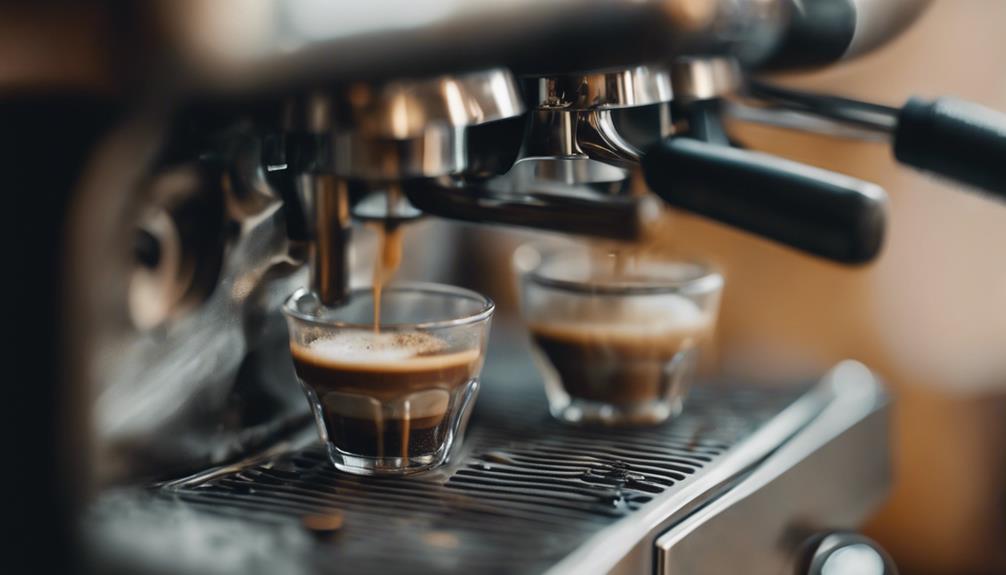
Dirty equipment can greatly impact the taste of your espresso, leading to undesirable flavors such as rancid or metallic notes. Oils from coffee residue can build up in your machine, resulting in a metallic taste in your brew.
To tackle this issue, make sure you regularly clean your equipment. Backflushing with water and a specialized cleaner is essential to remove any oily residue and maintain the quality of your espresso.
Neglecting to clean your portafilters and baskets can introduce an ashy or bitter flavor to your drink. By practicing proper maintenance routines, you can prevent issues like channeling and ensure even extraction, ultimately contributing to a better-tasting espresso.
Adjustments for a Balanced Espresso Flavor
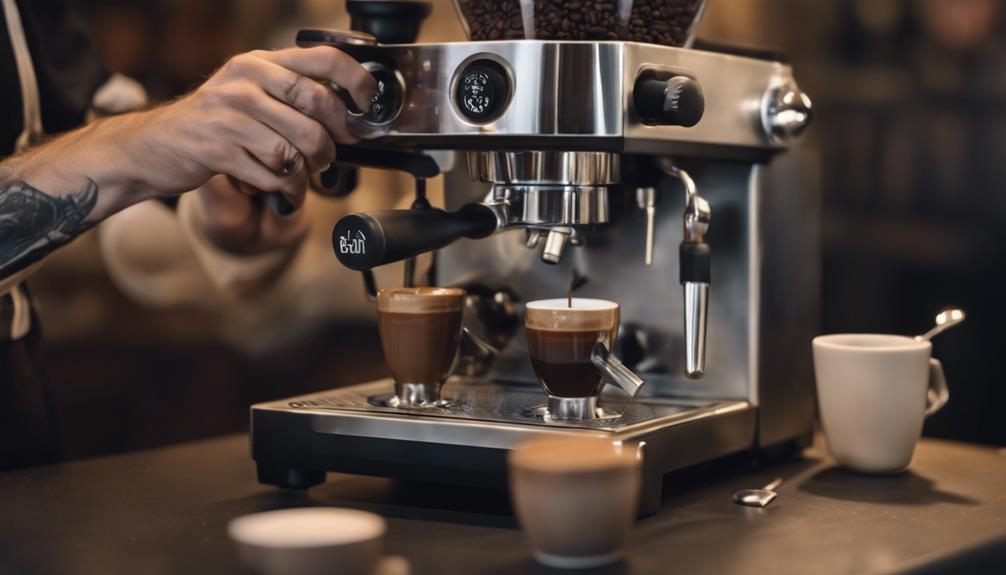
For a more balanced espresso flavor, consider making adjustments to your grind size to control extraction and reduce bitterness. Here are three key adjustments you can make to enhance the taste of your espresso:
- Grind Size: Experiment with a finer grind setting to slow down extraction, allowing for more balanced flavors to come through in your espresso shot. Finer grounds can help prevent the overpowering bitterness often associated with coarser grinds.
- Bean Quality: Opt for fresh, high-quality coffee beans with the right roast level. The freshness and roast of the beans have a substantial impact on the overall flavor profile of your espresso, contributing to a smoother and less bitter taste.
- Water Temperature: Make sure your water temperature is within the ideal range of 195-205°F. Consistent water temperature is essential for achieving a flavorful espresso without the unpleasant bitterness that can result from water that's too hot or too cold.
Making these adjustments can help you create a more enjoyable espresso experience with a well-balanced flavor profile.
Frequently Asked Questions
How to Remove Bitterness From Espresso?
To remove bitterness from espresso, adjust grind size to coarser settings, use fresher beans, and check water temperature.
Experiment with brewing ratios for balance.
Regularly clean and maintain your espresso machine.
These steps can help enhance the taste of your espresso.
How Do You Fix the Taste of Espresso?
To fix the taste of espresso, there are several key steps you can take. Begin by adjusting the grind size and tamping pressure. Check that the water temperature isn't too hot and consider trying different coffee beans or roast levels. It's important to avoid overheating the coffee during the brewing process. By making these adjustments, you can enhance the flavor profile of your espresso. Remember, experimentation is key to finding the perfect balance for a less bitter taste.
Experimentation is key to finding the right balance for a less bitter taste.
How to Make Espresso Taste Better?
To make your espresso taste better, focus on key factors like:
- Adjusting grind size
- Using fresh beans
- Maintaining proper water temperature
- Experimenting with tamping pressure
- Keeping your machine clean
These steps can enhance flavor, balance extraction, and reduce bitterness in your espresso.
How Do You Get Rid of Bitter Aftertaste in Coffee?
To get rid of a bitter aftertaste in coffee, try adjusting the grind size to coarser settings and using proper tamping pressure.
Guarantee fresh, high-quality beans and check water temperature for best brewing.
Experiment with shot time and water ratio for a balanced flavor.
What Could Cause My Espresso to Taste Bitter as Well as Not Being Creamy?
There are 7 reasons for noncreamy espresso, which could result in a bitter taste. Over-extraction, a dirty espresso machine, using old coffee beans, or a high water temperature can all contribute to this issue. Inconsistent tamping pressure, incorrect grind size, or poor quality water may also be the culprits.
What Causes Bitterness in Espresso and How Can I Fix It?
Understanding espresso bitterness flavor is crucial for coffee lovers. Bitterness in espresso can result from over-extraction, low-quality beans, or improper brewing. To fix it, adjust your grind size, brewing time, and water temperature. Also, consider using freshly roasted, high-quality beans for a smoother, less bitter taste.
Conclusion
So, next time your espresso tastes bitter, just remember to check your grind size, water temperature, and the freshness of your beans.
Keep an eye on your brewing parameters and make sure your equipment is clean.
With a little adjustment and attention to detail, you'll be on your way to enjoying a perfectly balanced espresso flavor.
Happy brewing!
